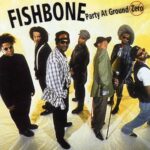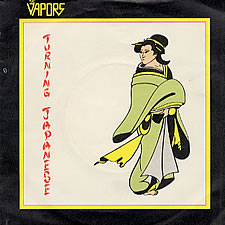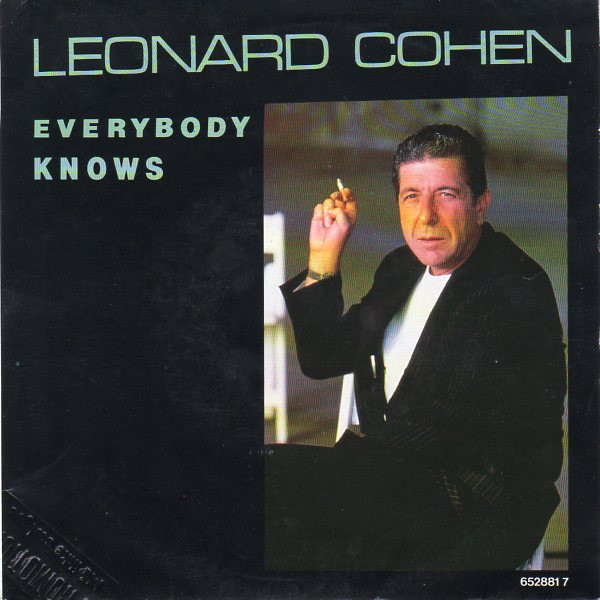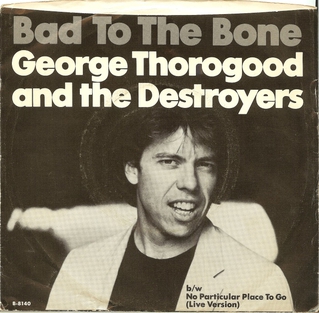 In the wild, chaotic mid-1980s Los Angeles music scene, few bands embodied unfiltered creativity like Fishbone. Blending ska, punk, funk, metal, and soul into a combustible sonic cocktail, Fishbone stood apart from nearly every other act of the era. And at the center of their early career was “Party at Ground Zero,” the lead single from their self-titled 1985 debut EP.
In the wild, chaotic mid-1980s Los Angeles music scene, few bands embodied unfiltered creativity like Fishbone. Blending ska, punk, funk, metal, and soul into a combustible sonic cocktail, Fishbone stood apart from nearly every other act of the era. And at the center of their early career was “Party at Ground Zero,” the lead single from their self-titled 1985 debut EP.
To the casual listener, the song may sound like a hyperactive ska-punk party anthem, a raucous invitation to let loose and dance. But beneath the infectious horn lines, manic energy, and shouted choruses lies a darker subtext. “Party at Ground Zero” is about nothing less than nuclear annihilation. In the middle of the Cold War, with Ronald Reagan and Mikhail Gorbachev brandishing missiles and citizens living under the shadow of Mutually Assured Destruction, Fishbone had the audacity to ask: what if the end of the world looked like a dance party?
The result is one of the most iconic songs in the band’s catalog — a perfect distillation of Fishbone’s style, philosophy, and cultural moment. “Party at Ground Zero” remains a cult classic, revered not only by fans of ska and alternative rock but also by anyone fascinated with music that captures the absurd contradictions of its time.
This article explores the origins, sound, lyrics, cultural impact, and lasting legacy of “Party at Ground Zero,” tracing how a group of young Black musicians from South Central Los Angeles redefined what rock music could be while laughing in the face of nuclear doom.
Fishbone’s Beginnings: The Birth of Chaos in South Central
Fishbone’s story begins in Los Angeles in the late 1970s. Angelo Moore (vocals/saxophone), Kendall Jones (guitar), Norwood Fisher (bass), Chris Dowd (keyboards/trombone), Walter Kibby (trumpet), and Phillip “Fish” Fisher (drums) were teenagers who met in junior high and high school. At a time when racial stereotypes often limited expectations of Black musicians to soul, funk, or R&B, these six friends defied convention by diving headfirst into punk rock, ska, and metal.
They were musical omnivores, absorbing the energy of punk bands like the Dead Kennedys and Black Flag, the rhythmic complexity of Parliament-Funkadelic, and the horns-driven ska revival led by Britain’s 2 Tone movement (bands like The Specials, Madness, and The English Beat). By the early 1980s, Fishbone had forged their own identity: a six-headed monster that could switch from blistering punk to tight funk grooves in a heartbeat, often within the same song.
Signed to Columbia Records in 1984 after gaining a reputation for their ferocious live shows, Fishbone released their self-titled debut EP the following year. Among its standout tracks, “Party at Ground Zero” became both their calling card and their manifesto.
The Sound of “Party at Ground Zero”
Musically, “Party at Ground Zero” is a whirlwind. From the opening horn stabs, the song announces itself as a ska jam, rooted in the upbeat rhythms of Jamaican music but accelerated to punk-rock tempos.
-
The Horn Section: Angelo Moore’s saxophone, Chris Dowd’s trombone, and Walter Kibby’s trumpet create a brassy, celebratory energy. Their interlocking riffs drive the song forward, giving it a sense of festivity that ironically contrasts with the apocalyptic subject matter.
-
The Rhythm Section: Norwood Fisher’s bass locks into Phillip Fisher’s drums, laying down a groove that’s equal parts ska bounce and funk swagger. The offbeat accents keep the song moving, daring listeners not to dance.
-
The Vocals: Angelo Moore delivers the lyrics with manic enthusiasm, half-shouting, half-singing, channeling the energy of a street preacher at the end of the world. His charisma makes the bizarre scenario of a nuclear apocalypse feel both absurd and strangely joyful.
The production is raw but effective, capturing the kinetic chaos of the band’s live performances. Unlike many polished pop singles of the mid-1980s, “Party at Ground Zero” feels messy, urgent, and alive.
Lyrical Themes: Apocalypse Meets Celebration
The genius of “Party at Ground Zero” lies in its juxtaposition of theme and tone. The lyrics describe a world on the brink of nuclear destruction, yet the delivery turns it into a bizarre celebration.
The chorus, shouted with unbridled glee, sums up the paradox:
“Party at ground zero / A ‘B’ movie starring you / And the world will turn to flowing / Pink vapor stew.”
This is not a song of despair but of absurdist resignation. The world may end in fire and radiation, but Fishbone suggests we might as well dance through the chaos. The imagery of a “B movie” reflects both the Cold War’s melodramatic fearmongering and the band’s playful, cinematic imagination.
Throughout the lyrics, there are references to annihilation, chaos, and absurdity, all framed as part of a surreal party. The tension between content and delivery creates a unique tone: it’s both satirical and celebratory, a reminder that humor can be a powerful weapon against fear.
Cold War Context: Dancing in the Shadow of the Bomb
To understand why “Party at Ground Zero” hit such a nerve, one must recall the cultural climate of 1985. The Cold War was in full swing, with nuclear arsenals on both sides capable of destroying humanity many times over. The idea of “Mutually Assured Destruction” (MAD) was not abstract — schoolchildren practiced duck-and-cover drills, movies like The Day After and WarGames dramatized nuclear annihilation, and politicians casually referenced the possibility of total war.
Fishbone, as young Black men growing up in Los Angeles, had every reason to distrust authority and to see the absurdity in a system that invested billions in weapons while neglecting communities like theirs. “Party at Ground Zero” reflects this distrust, turning the apocalypse into a joke at the expense of political leaders and Cold War paranoia.
At the same time, it tapped into a universal anxiety. Young people across America and beyond felt powerless against the specter of nuclear war. By reframing it as a party, Fishbone offered both catharsis and rebellion — a way to laugh at the absurdity of impending doom rather than succumb to fear.
The Music Video: A Surreal Party
The music video for “Party at Ground Zero,” directed by Henry Selick (who would later direct The Nightmare Before Christmas), is a surreal visual companion to the song’s themes. It depicts a bizarre, cartoonish party where chaos reigns: masked dancers, wild costumes, and explosions intermingle as the band performs.
The video amplifies the song’s B-movie vibe, presenting the apocalypse as a campy carnival rather than a grim tragedy. It became a staple on MTV, helping Fishbone reach a wider audience. For many fans, the video remains one of the most memorable parts of Fishbone’s early career.
Reception and Immediate Impact
“Party at Ground Zero” was never a massive mainstream hit in terms of chart positions, but it quickly became a cult favorite. It received heavy rotation on MTV’s alternative programs and gained traction on college radio, where audiences were more receptive to Fishbone’s genre-defying sound.
Critics praised the song for its originality, energy, and satirical edge. While mainstream rock radio largely ignored it, the song cemented Fishbone’s reputation as one of the most exciting live bands in America. Their concerts, often climaxing with “Party at Ground Zero,” became legendary for their sheer energy and unpredictability.
Influence on Ska, Punk, and Alternative Rock
“Party at Ground Zero” had ripple effects far beyond Fishbone’s immediate fanbase. Alongside bands like The Specials, Madness, and The English Beat, Fishbone helped popularize ska among American audiences. But unlike their British counterparts, Fishbone injected ska with heavy doses of punk aggression and funk grooves, creating a sound that would inspire countless bands.
Groups like the Red Hot Chili Peppers, No Doubt, Sublime, and Reel Big Fish all cite Fishbone as a crucial influence. In particular, No Doubt’s ska-punk sound in the 1990s can be traced directly back to the template of “Party at Ground Zero.” Even in the burgeoning alternative metal scene, bands like Faith No More and Living Colour acknowledged Fishbone’s role in breaking down genre boundaries.
A Song That Defined Fishbone
For Fishbone themselves, “Party at Ground Zero” became both a blessing and a curse. It was their breakout track, the one song that consistently drew attention and new fans. To this day, it remains one of their most requested live songs, often serving as the centerpiece of their sets.
However, its success also pigeonholed them in the eyes of some listeners, who associated them only with this one ska-punk anthem while overlooking their broader catalog. Fishbone’s later albums, such as Truth and Soul (1988) and The Reality of My Surroundings (1991), showcased a band capable of complex political commentary, intricate musicianship, and boundary-pushing experimentation. Yet “Party at Ground Zero” remains their most recognizable calling card.
Cultural Legacy
Today, “Party at Ground Zero” is remembered as one of the quintessential songs of the 1980s alternative underground. It captures both the optimism and the paranoia of the decade — the desire to dance and celebrate even in the face of existential threats.
The song has appeared in films, television shows, and video games, often used to evoke either 1980s culture or apocalyptic absurdity. It has also been covered by younger bands paying tribute to Fishbone’s influence.
In 2020, as global crises ranging from pandemics to political unrest shook the world, “Party at Ground Zero” felt newly relevant. Its message — that joy and absurdity can coexist with fear and destruction — remains timeless.
Why “Party at Ground Zero” Still Resonates
Nearly 40 years after its release, “Party at Ground Zero” still resonates for several reasons:
-
Timeless Anxiety: The threat of apocalypse may have shifted from nuclear war to climate change or pandemics, but the feeling of living on the brink persists.
-
Universal Energy: Its infectious rhythm and horn lines remain irresistible, making it a guaranteed party-starter despite its dark subject matter.
-
Genre-Defying Brilliance: In an era where genre boundaries continue to blur, Fishbone’s ability to fuse ska, punk, funk, and soul feels more relevant than ever.
-
Cultural Rebellion: Its humor and absurdity still serve as a form of rebellion against fear, echoing punk’s ethos of laughing at authority.
Conclusion: Laughing and Dancing at the End of the World
“Party at Ground Zero” is more than just a ska-punk anthem. It is a statement of philosophy — a refusal to surrender to despair, a commitment to joy in the face of annihilation, and a celebration of life even as the world teeters on the edge.
For Fishbone, it was the song that put them on the map, introducing their chaotic brilliance to audiences who would follow them through decades of musical innovation. For the world, it remains a reminder that sometimes the best way to confront fear is to laugh, dance, and throw a party.
As long as humanity wrestles with its own self-destructive impulses, “Party at Ground Zero” will remain relevant. It’s a song for anyone who has ever felt the weight of looming disaster and decided to meet it not with despair, but with joy.


